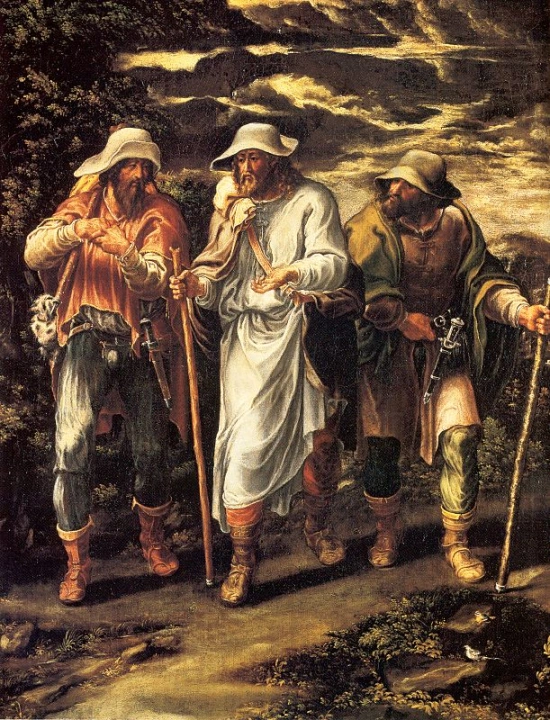13
And, behold, two of them went that same day to a village called Emmaus, which was from Jerusalem about threescore furlongs.
14
And they talked together of all these things which had happened.
15
And it came to pass, that, while they communed together and reasoned, Jesus himself drew near, and went with them.
16
But their eyes were holden that they should not know him.
17
And he said unto them, What manner of communications are these that ye have one to another, as ye walk, and are sad?
18
And the one of them, whose name was Cleopas, answering said unto him, Art thou only a stranger in Jerusalem, and hast not known the things which are come to pass therein these days?
19
And he said unto them, What things? And they said unto him, Concerning Jesus of Nazareth, which was a prophet mighty in deed and word before God and all the people:
20
And how the chief priests and our rulers delivered him to be condemned to death, and have crucified him.
21
But we trusted that it had been he which should have redeemed Israel: and beside all this, to day is the third day since these things were done.
22
Yea, and certain women also of our company made us astonished, which were early at the sepulchre;
23
And when they found not his body, they came, saying, that they had also seen a vision of angels, which said that he was alive.
24
And certain of them which were with us went to the sepulchre, and found it even so as the women had said: but him they saw not.
25
Then he said unto them, O fools, and slow of heart to believe all that the prophets have spoken:
26
Ought not Christ to have suffered these things, and to enter into his glory?
27
And beginning at Moses and all the prophets, he expounded unto them in all the scriptures the things concerning himself.
28
And they drew nigh unto the village, whither they went: and he made as though he would have gone further.
29
But they constrained him, saying, Abide with us: for it is toward evening, and the day is far spent. And he went in to tarry with them.
30
And it came to pass, as he sat at meat with them, he took bread, and blessed it, and brake, and gave to them.
31
And their eyes were opened, and they knew him; and he vanished out of their sight.
32
And they said one to another, Did not our heart burn within us, while he talked with us by the way, and while he opened to us the scriptures?
33
And they rose up the same hour, and returned to Jerusalem, and found the eleven gathered together, and them that were with them,
34
Saying, The Lord is risen indeed, and hath appeared to Simon.
35
And they told what things were done in the way, and how he was known of them in breaking of bread.







